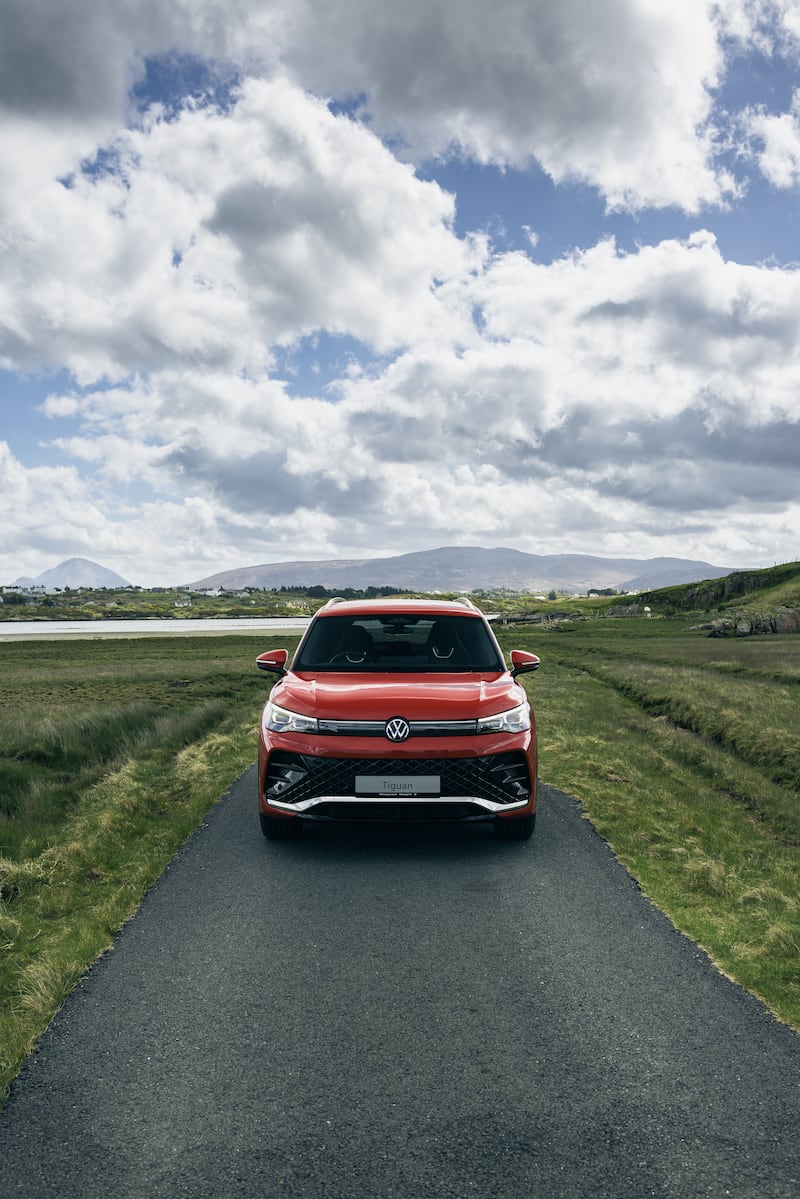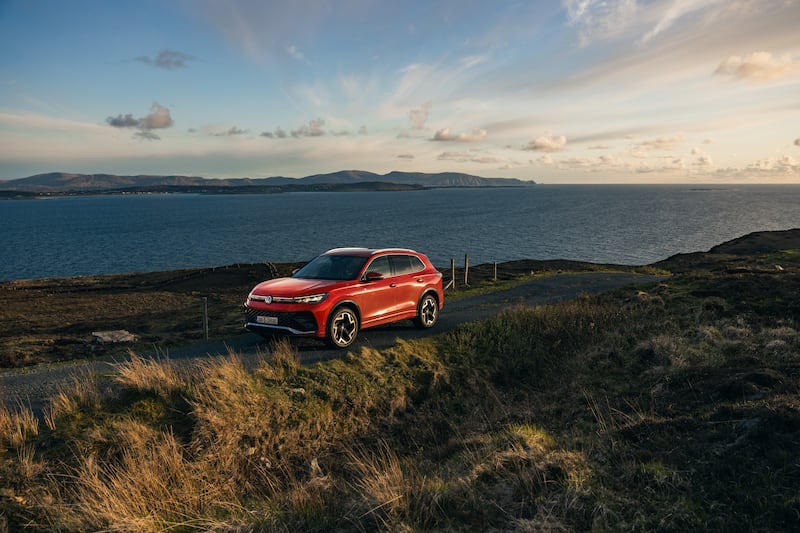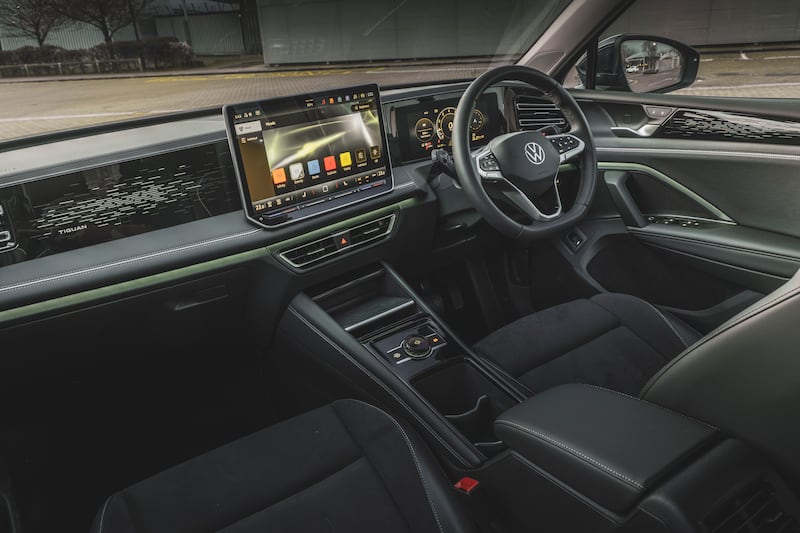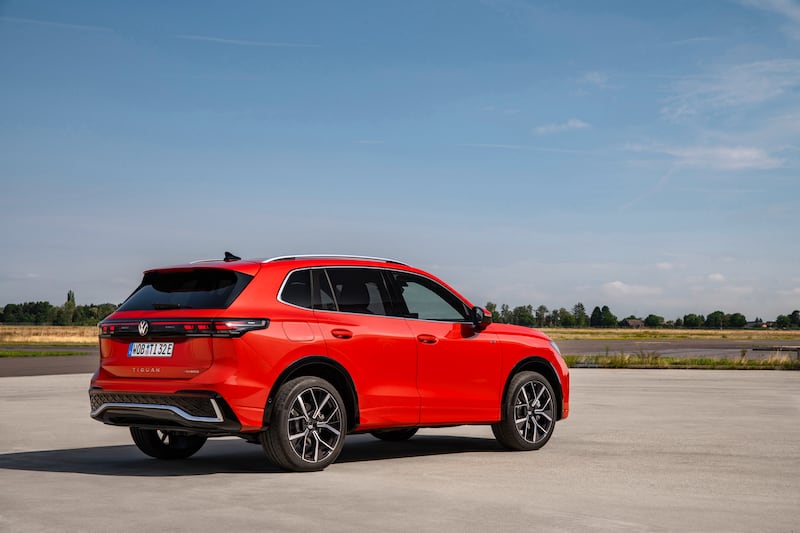Volkswagen may be pushing its new all-electric ID model range these days, but underpinning the brand’s sales figures remains a bedrock of established models. Volkswagen is second in the new car sales league, and its best-sellers are the Golf and Tiguan.
If you compare these two with their EV counterparts, the Golf is outselling the ID.3 by over 70 per cent, while the Tiguan outsells the similarly-sized ID.4 crossover by over 40 per cent.
Clearly the sales figures are influenced by the arrival of an all-new version of the Tiguan, but the popularity of this family-sized SUV among Irish buyers can’t go unnoticed. Nor can the fact that in many markets, including Ireland, mainstream buyers remain reticent about making the switch to electric.

The new Tiguan comes in two flavours: either a 2-litre 150hp diesel or a 1.5-litre 204hp plug-in hybrid PHEV. So far the vast majority of sales have been of diesels, with just 93 PHEV Tiguans registered compared to 1,372 diesels.
READ MORE
That’s perhaps reflective of the large job of work ahead of legislators and EV advocates in winning over mainstream Ireland to plug-in power. For the Tiguan is a good bellwether for Irish consumer tastes.
For family buyers, it’s practical, competitively priced and quasi-premium. Just as the Golf was in the days before the SUV craze, so the Tiguan has become an established feature on most new car buyers’ list of potential purchases.

If there was an issue with the outgoing model, it was guilty of being a bit bland. It blended into the background and raised few remarks. It was a safe bet from a very established brand.
While the exterior has been spruced up to more closely reflect the styling of the VW’s SUV flagship, the Touareg, this time the Germans have also made large improvements to the interior. This is where potential buyers will be wooed.
Dominating the centre console is either a 12.9-inch or 15-inch touchscreen, depending on your specification. This is running on VW’s latest software operating system, which itself is a giant leap from the lazy loading and often unresponsive system that drew so much ire when it started to show up on first-generation ID models.
Meanwhile, wisdom has prevailed in terms of preserving some proper physical buttons for some core functions, particularly on the steering wheel where they replace clumsy and complicated touch-sensitive strips. There’s also a multifunctional dial in the middle – where gearsticks used to go – that can be used to change driving modes and audio volume.
As all models offered are automatics, the gear shifter is on a stalk to the right of the steering wheel, similar to the ID models.
The blend of competent tech, smart finishes and a spacious cabin is impressive and – better late than never – VW has seemingly overcome its software issues.

But buyers don’t opt for Tiguans on looks and tech alone, and the car itself is nicely balanced in terms of steering and ride quality. It’s not going to set a new benchmark for handling prowess, nor is it going to redefine the crossover category as the driving enthusiast’s car of choice. Its biggest selling point will be its ease, comfortably cruising along on motorway stretches, but equally adept at weaving through tighter bends on back roads.
This third-generation Tiguan shares the same suspension set-up as the revamped Skoda Superb and Kodiaq, known as the MQB Evo platform. The upside is in weight saving, despite all the extra tech kit compared to the previous generation.
The front-wheel drive format means it’s not really going to be doing much off-roading, but that’s nothing new for cars in this class.

Our test car was the diesel option and considering range and fuel economy, it was remarkably frugal, with all the torque necessary to keep the show on the road. It’s worth noting that compared to some new Chinese arrivals, driving aids are subtly engaged and rarely intrusive. Composed would probably best describe the character of the Tiguan on the road.
With prices starting at €48,095 for the diesel, you can see why many will be tempted to Tiguan. Start walking up the grade levels and you can touch up to €58,000 which starts to rub shoulders with some premium brand entry SUVs, such as BMW’s X1. However, thanks to its revamp, the Tiguan can make a strong competitive case for itself.
It may be a case of evolution rather than revolution, but with so much upheaval already under way – and uncertainty the most over-riding sentiment among current car buyers – that’s only going to help sell more Tiguans. Small improvements throughout the car make it a very credible and competitive player in among the current crop of crossovers. And offering a choice of engine options – both diesel and PHEV – covers the bases for most buyers.
Lowdown: Volkswagen Tiguan 2.0 TDI R Line
- Power: 1968cc 150hp four-cylinder diesel combined with a 7-speed auto DSG, putting out 360Nm of torque
- CO2 emissions (annual motor tax): 146g/km (€270)
- Fuel consumption: 5.6l/100km (WLTP)
- 0-100km/h: 9.4 secs
- Price: €59,945 as tested (starts at €48,095 for diesel and €56,045 for PHEV)
- Our rating: 4/5
- Verdict: Composed and reassuring in a world of uncertainty











